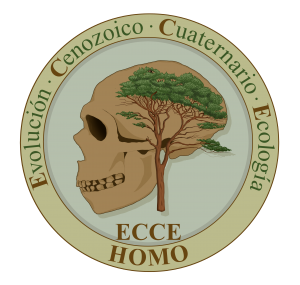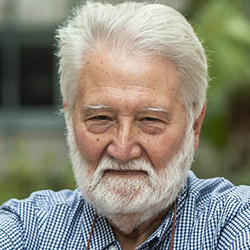JOAN DOMÈNEC ROS ARAGONÉS
Emeritus Professor of Ecology at the University of Barcelona (UB); he has done research in several fields of marine ecology: biology and ecology of marine benthic organisms (mainly Opisthobranch molluscs) and the communities they form. He has worked also on aspects of general and applied ecology, marine pollution, and biodiversity conservation. For several years he has directed the consolidated research group in “Ecology of marine zoobenthos” and the ecological monitoring of the Marine Protected Area of Medes Islands (NW Mediterranean), as well as the program of Marine Sciences of the University of the Mediterranean (European project Medcampus), and has coordinated the UNESCO chair on Environment and Sustainable Development of the UB. He has been a member of several scientific committees of Spanish, French and Italian Marine Protected Areas and Research Centres. He has chaired the Council for the Protection of the Nature (an advisory board of the Catalan Government) and the Institute for Catalan Studies. He is an active populariser of the science of ecology and the sciences in general, with a dozen books, and has translated more than a score of books on ecology, marine biology, evolutionary biology and history of science.
“Many years ago, in high school, we were told that Spain was once a continuous forest from the Pyrenees and the Cantabrian mountain range to Gibraltar. The phrase that summarized the situation was that a squirrel could have jumped from one tree to another on a peninsular route from north to south or from east to west. It was never made clear to us what tree species these were, but holm oaks and oaks were sometimes mentioned. Later, at university, botanists presented us with a more complete, if still fragmentary, botanical overview of the ancestral vegetation of Iberia. The soil and geobotanical work of Emilio Huguet del Villar, among others, in the first half of the 20th century, laid the foundations for studies of the current distribution of plants in Spain and other Mediterranean countries, but not so much the past distribution. Plants fossilize poorly, we were told, as they lack bones and shells like animals, and the lack of information was almost total.
Ramon Margalef, our distinguished ecologist, recalled how another great botanist contemporary of Huguet, Pius Font i Quer, summarized the situation of science in the Spain of his time in a very “geographical” way: “Font said that one of the country’s ills is that all of us, more and less, were eminences, in the physical sense of the word, reliefs or obstacles on a smooth surface, over which one tripped. And they really can be described as isolated eminences, both due to the lack of communication between them, and due to the absence of a living fabric of relationships between a sufficient number of people, interested in a common task, that fill the gaps, allow continuity and make it difficult for anyone to boast beyond their merits, or to engage in uncivil behavior. In short, it lacks what we could call connective tissue, because individually I believe that we are perfectly comparable within the Western world.”
Currently, and in fact for some decades now, this is not the situation of science in Spain, in general or in reference to practically all branches of the arbor scientiarum. Our scientists, their teams, our universities and research centers are on a par with those of the most advanced countries in science. This is, in part, a credit to the Spanish science system, both the state system and that of many autonomous communities, as well as the European science system. But it is above all the merit of our researchers, who, compared to their international colleagues, endure more administrative pressure, suffer from social misunderstanding and tend to work harder than their counterparts.
This entire preamble is to highlight the enormous merit of the trio of volumes that make up Iberian Paleoflora and Paleovegetation, the result of the collaboration of many experts in paleobotany and paleoecology, under the direction of José Sebastián Carrión. Pepe Carrión has acted as agent provocateur of the guild of European experts, mainly Spanish, of which he is a prominent researcher, and has catalyzed this magnum opus. It is not the first great contribution of Pepe Carrión and his team of experts to the knowledge of the paleobotany of the Iberian Peninsula, and I predict that it will not be the last, because the investigative impetus of the group of authors will cause them to continue their research in the same peninsular and Balearic localities explored or in new ones, always with the desire to complete the puzzle of Iberian paleoflora and paleovegetation.
José Sebastián Carrión and the group of scientists who wrote this magnificent work are the best proof that, although in our country there are still eminences (Pepe, among many others), we finally have connective tissue (the expert collaborators of Iberian Paleoflora and Paleovegetation, among many others) that equates Spanish and Iberian science with international science.
I am extremely pleased to contribute these lines to this great work, while I also remember the inquisitive and restless young man that Pepe Carrión was forty years ago, when he was one of my students at the University of Murcia. As with biological children, it is the law of life that academic children reach levels of excellence higher than those of their putative parents. Pepe’s generosity, in making his work accessible online to researchers from all over the world, is not far behind his research stamina, his persuasion and leadership capacity. My sincere congratulations.”
It is a magnificent encyclopedic work where past, present, and future flow through the hands of experts, presenting this interesting sample of the nature of our territory with rigor and creativity.»

Grupo de investigación E005-II ECCE
HOMO (Evolución Cenozoico Cuaternario Ecología Homo)
© Paleofloraiberica








